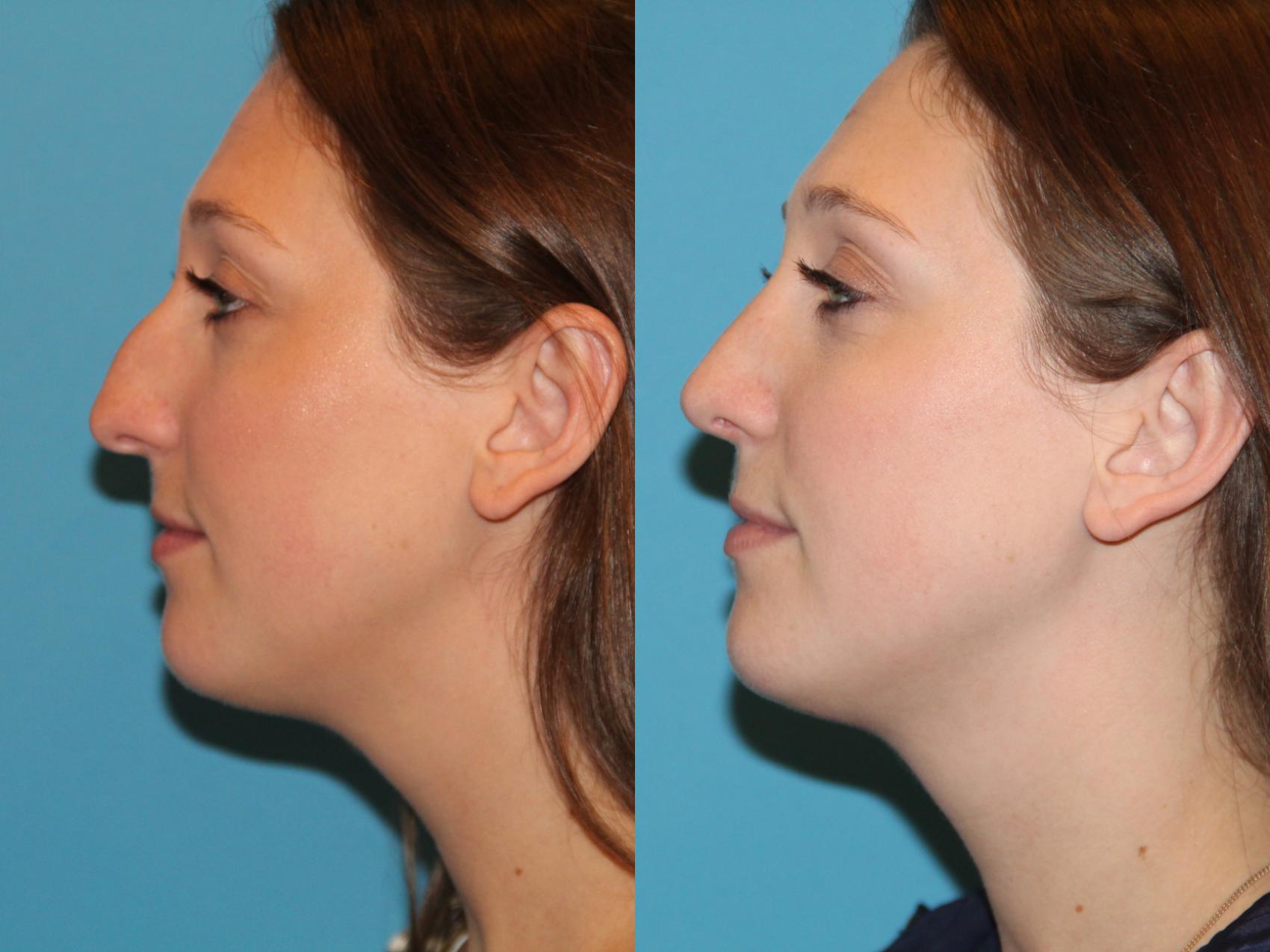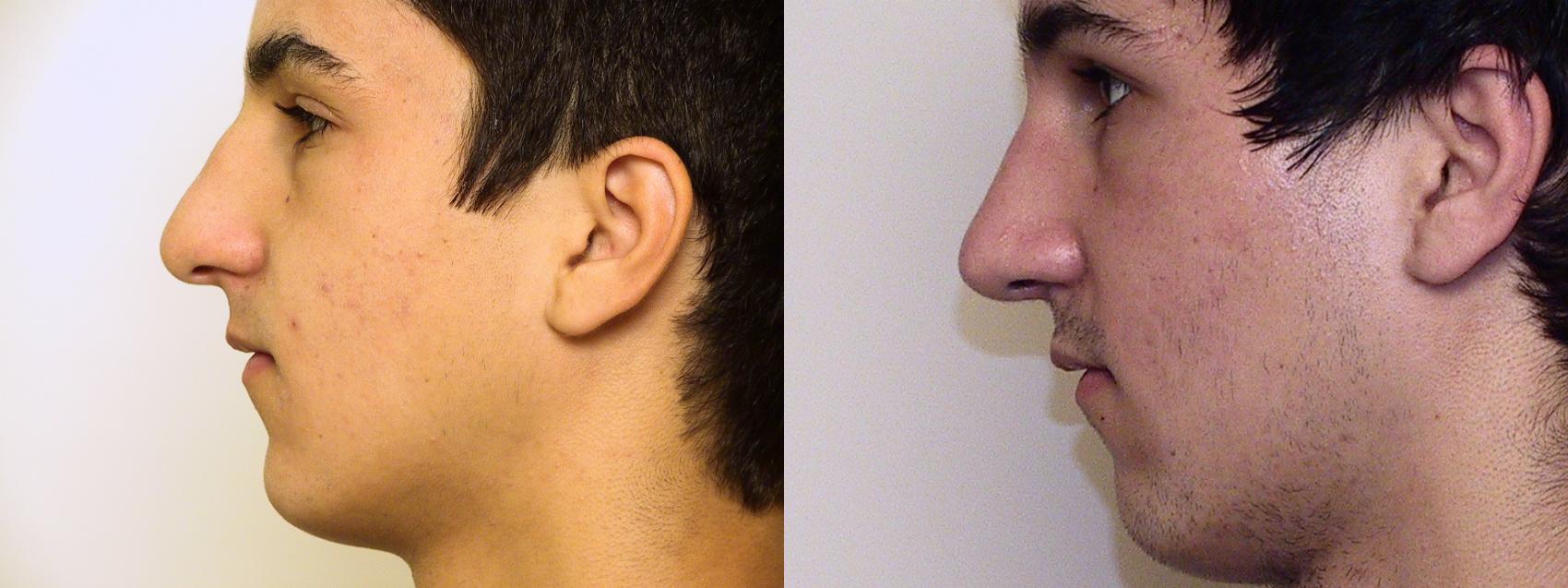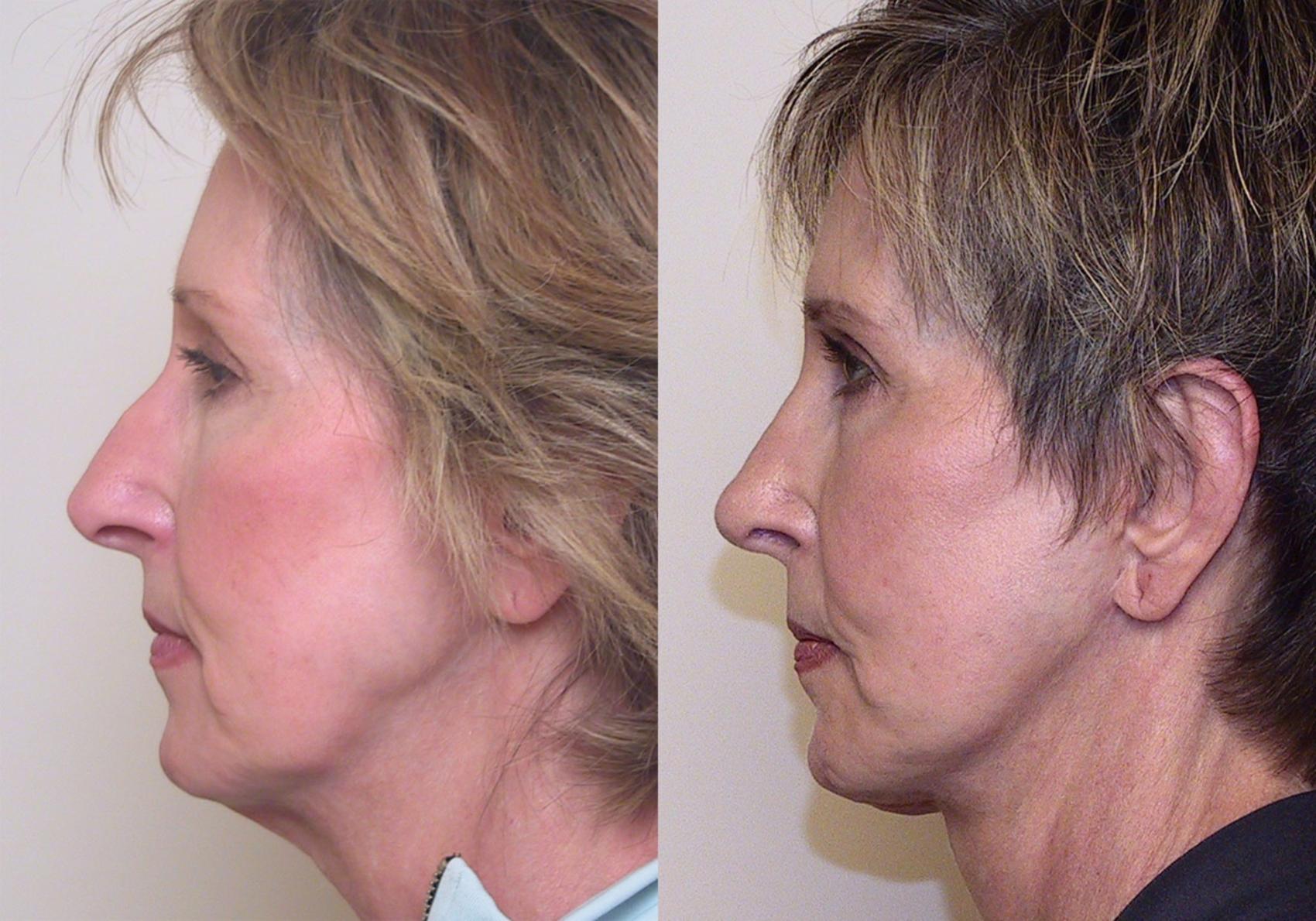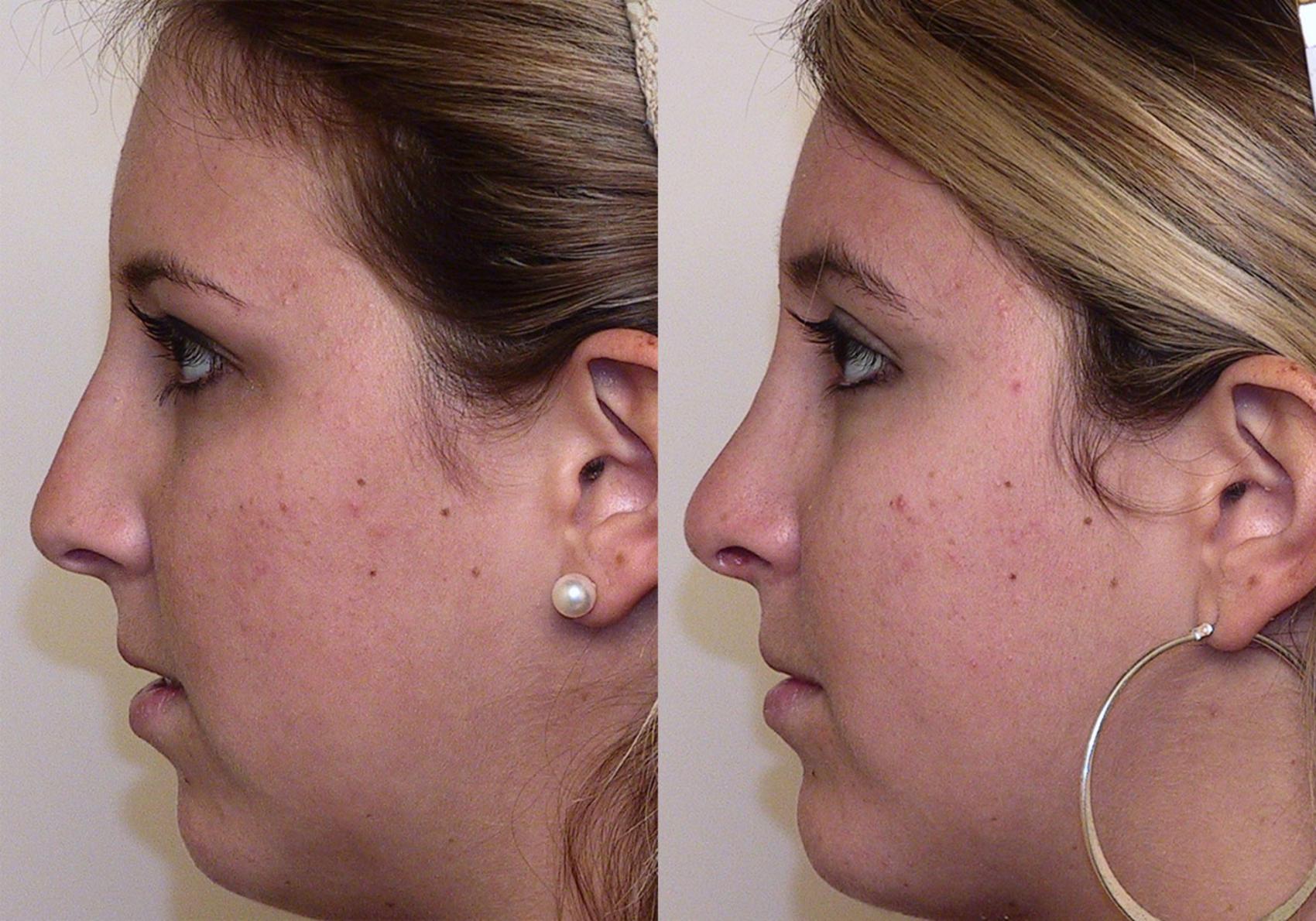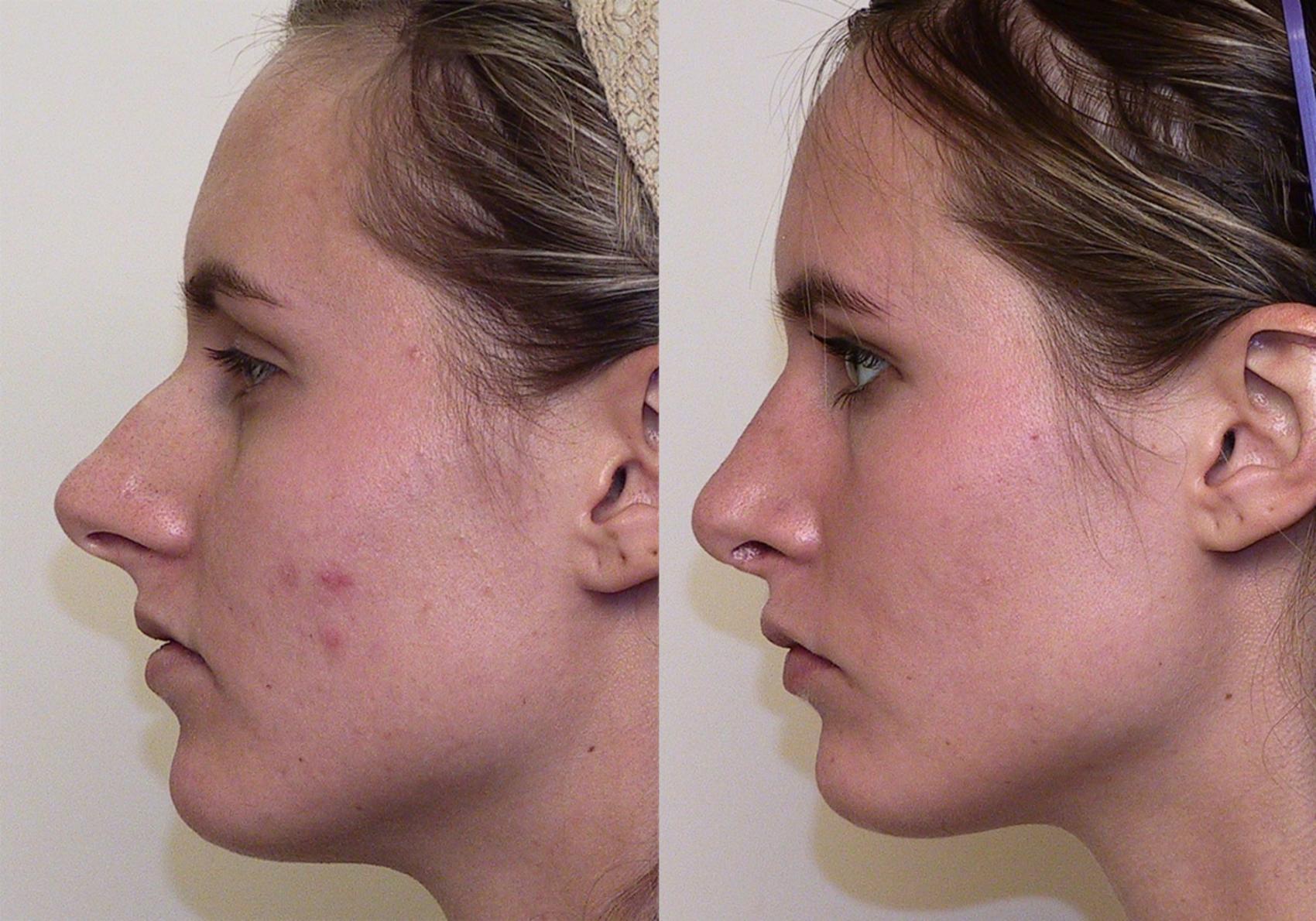Buckhead Facial Plastic Surgery: Theresa M. Jarmuz, MD
1218 W Paces Ferry Rd NW Unit 108
Atlanta, GA 30327
Phone: (404) 233-3937
Monday-Thursday: 9 a.m.–5 p.m.
Friday: 9 a.m.–1 p.m.
Rhinoplasty
Your nose is one of your most prominent and unique facial features, so it’s not surprising that being unhappy with your nose can affect how you feel about your overall appearance. Dr. Theresa M. Jarmuz performs rhinoplasty in Atlanta to help people from Buckhead, Vinings, Smyrna, Brookhaven, and other nearby areas incorporate desired changes to their noses while preserving their overall look and facial aesthetics.
Dr. Jarmuz is certified by the American Board of Otolaryngology (head and neck surgery) and the American Board of Facial Plastic Surgery and has education and training specific to the anatomy and aesthetics of the nose. Her surgical skills and artistic eye give her certain expertise in performing a rhinoplasty, ensuring that your surgery results are a success. To learn more about rhinoplasty at Buckhead Facial Plastic Surgery, please book now or call us at (404) 233-3937.
What Can Rhinoplasty Do?
Rhinoplasty is consistently popular thanks in part to its versatility. Using today’s most advanced surgical techniques, Dr. Jarmuz can correct a variety of common complaints about the size and shape of the nose.
- Nasal projection: This refers to the degree that the nose “sticks out” from the face. If you feel that your nose projects excessively, your profile may make you feel self-conscious.
- Nasal size: A nose that is not proportional to surrounding facial features can be a source of cosmetic concern. Depending on your needs, Dr. Jarmuz can enlarge or reduce your nose, carefully sculpting its supportive structures to better complement your features.
- Nasal hump: A hump or bump on the bridge of the nose is one of the most common reasons people undergo rhinoplasty. Dr. Jarmuz uses meticulous techniques to reduce a hump and create a smooth slope.
- Nostril size: Nostrils that are excessively wide or upturned can be altered through surgical adjustment of the alar base, the lowermost portion of the nose.
- Asymmetry: A crooked nose can be congenital or the result of trauma. Surgery can correct this to improve alignment, which can enhance appearance and, often respiratory function.
- Respiratory problems: Rhinoplasty is not always a strictly aesthetic procedure. Often, chronic respiratory issues related to the structure of the nose, such as a deviated septum, can be effectively corrected by incorporating a septoplasty at the time of rhinoplasty.
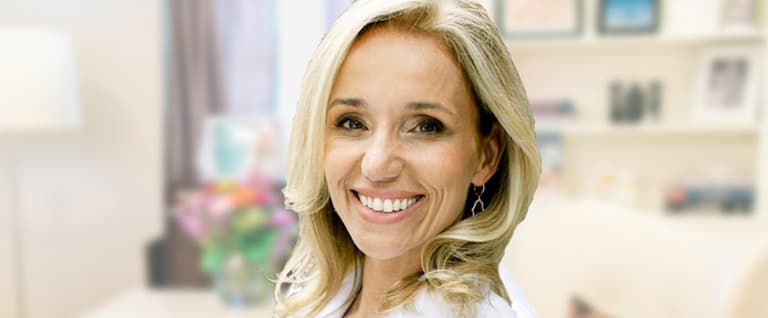
Theresa M. Jarmuz, M.D.
Double Board-Certified Facial Plastic Surgeon
The Procedure
For your rhinoplasty (commonly called a “nose job”), Atlanta facial plastic surgeon Dr. Jarmuz performs either an “open” procedure or a “closed” procedure. During a closed procedure, Dr. Jarmuz makes incisions entirely inside the nose. In an open procedure, she makes a very small incision between your nostrils, across the strip of skin known as the columella. The incision she uses during your procedure depends on your desired result.
During your consultation, Dr. Jarmuz can help you understand which incision may be best for you. She will review the surgical plan and discuss realistic expectations for altering nasal size, width, shape, and projection. Often, patients wish to combine rhinoplasty with other facial procedures such as blepharoplasty or submentoplasty. This can also be discussed at the time of the initial consultation. The procedure is performed on an outpatient basis under sedation in our AAAHC-accredited operating room facility.
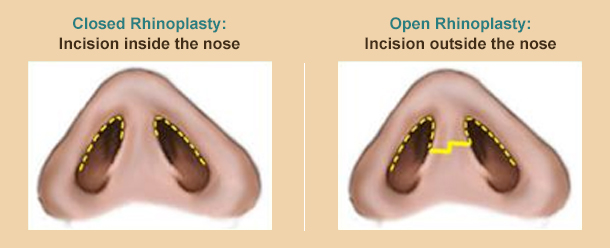
Revision rhinoplasty, a procedure that improves the results of a previous rhinoplasty, is also a specialty of Dr. Jarmuz. Some rhinoplasty patients wish to combine the surgery with other facial rejuvenation procedures, such as a brow lift or neck lift, to achieve a more complete transformation. However, this approach isn’t appropriate for everyone. During your consultation, Dr. Jarmuz performs a thorough physical evaluation to help you determine which procedures are appropriate for you.
Recovery
After surgery, you will have flesh-colored tape that will protect your nose during the early healing phase, which typically lasts about 1 week. During this time, you may be instructed to keep your head upright as much as possible and refrain from exercise and other strenuous activities in order to avoid unnecessary swelling. You can manage any discomfort with prescribed medications.
You can expect to return to your normal routine after 1 to 2 weeks, when most swelling has subsided and the splint has been removed. During your follow-up appointments, Dr. Jarmuz will gradually clear you to resume more vigorous activities, including exercise.
Although you’ll likely notice a significant improvement to your nose relatively soon after your splint is removed, it can take up to 1 year for your nose to assume its final size and shape. This time allows the bone and other supportive structures of the nose to settle into their ultimate positions. Barring trauma or revisionary surgery, the results of rhinoplasty are permanent.
What’s a Nonsurgical Rhinoplasty?
Occasionally, Dr. Jarmuz can enhance the nose without any surgery at all using injectable fillers such as JUVÉDERM® and Restylane®. This procedure, called a nonsurgical or “liquid” rhinoplasty, can improve the appearance of a hump or create a more symmetrical-looking nose. Dermal fillers eventually dissipate over time, so you’ll need regular touch-up treatments to maintain your results.
Frequently Asked Questions
How old do I have to be to have rhinoplasty?
Rhinoplasty is especially popular with younger people partly because the nose doesn’t age the way other parts of the body do. However, in order to create the best outcome possible, Dr. Jarmuz stresses that patients’ noses should be done developing prior to elective surgery. For most people, this typically happens by about age 16. Patients under the age of 18 require parental consent to undergo the procedure.
Will a previous injury or surgery affect my rhinoplasty?
During your consultation, it’s important to mention any previous facial injuries or surgeries to Dr. Jarmuz, even if they occurred many years ago. Although a prior injury or surgery doesn’t usually exclude you from rhinoplasty, it can make your surgery more technically complex. It’s important for Dr. Jarmuz to know your history so she can develop an appropriate surgical plan.
What kind of anesthesia does Dr. Jarmuz use during rhinoplasty?
Dr. Jarmuz typically performs rhinoplasty under MAC anesthesia or “twilight.” With this type of anesthesia, you are asleep and unaware of the procedure but breathing on your own. An anesthesiologist or nurse anesthetist will be present throughout your surgery to monitor your anesthesia needs and keep you comfortable. During your consultation, Dr. Jarmuz will review your anesthesia options to determine the safest choice for you.
Do I need to spend a night in the hospital?
No. Rhinoplasty is almost always an outpatient procedure, which means you’ll be able to return home a few hours after surgery. However, you’ll need to have a trusted friend or family member drive you home and stay with you for the remainder of the day.
Do rhinoplasty results last forever?
Rhinoplasty permanently adjusts the structure of your nose so your results are very long-lasting. Some people’s noses may change slightly over the years, however, due to aging or injury. Protecting your nose from trauma helps ensure that you enjoy your rhinoplasty results for decades to come.

